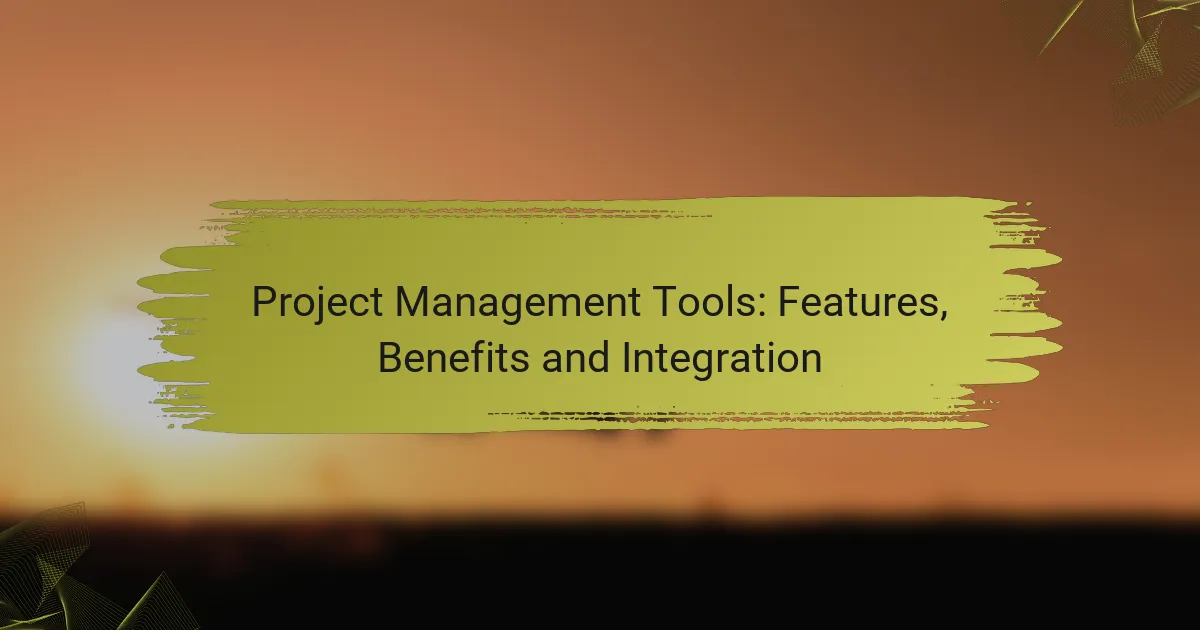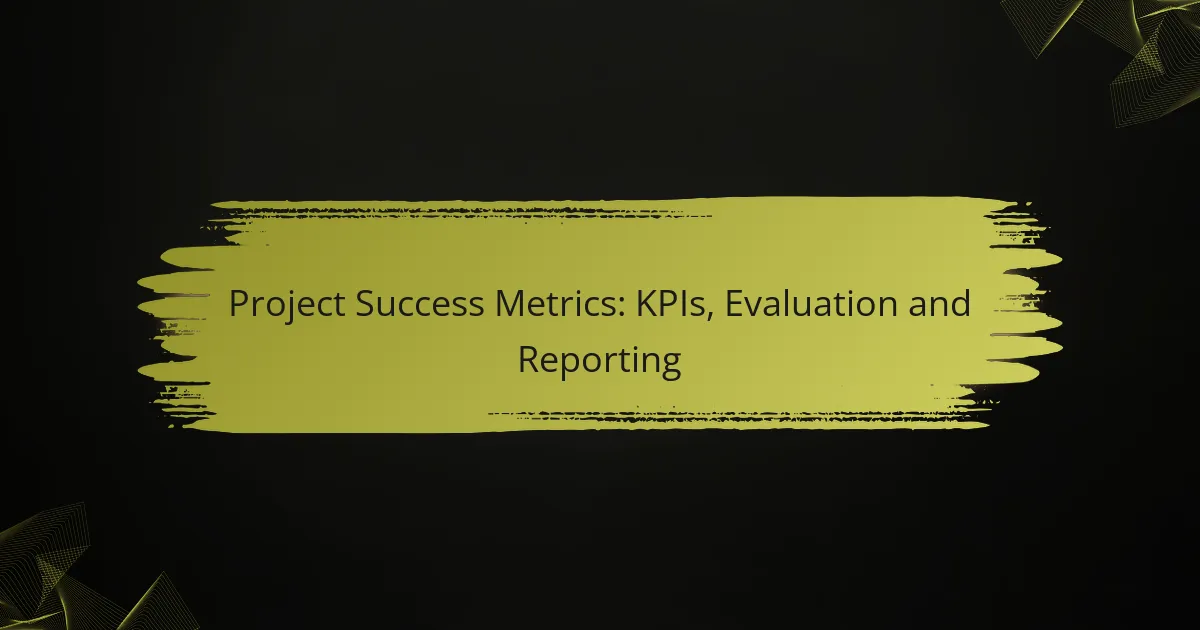Project management tools are essential for enhancing collaboration, streamlining workflows, and improving overall project visibility. With a variety of options available, such as Trello, Asana, and Jira, teams can choose tools that best fit their specific needs. Key features like task management, time tracking, and reporting capabilities play a crucial role in boosting productivity and keeping projects on track.

What are the best project management tools available?
The best project management tools streamline workflows, enhance collaboration, and improve project visibility. Popular options include Trello, Asana, Monday.com, Jira, and ClickUp, each offering unique features suited to different team needs.
Trello
Trello is a visual project management tool that uses boards, lists, and cards to organize tasks. It is particularly effective for teams that prefer a straightforward, Kanban-style approach to tracking progress.
Users can create boards for different projects and add cards for individual tasks, which can be moved through various stages of completion. Trello’s flexibility allows for easy customization, but it may lack advanced features for larger projects.
Asana
Asana is designed for task management and team collaboration, offering features like task assignments, due dates, and project timelines. It is ideal for teams that need to manage multiple projects simultaneously.
Asana’s user-friendly interface allows for easy tracking of project progress and team responsibilities. However, some users may find the range of features overwhelming if they only need basic task management.
Monday.com
Monday.com is a highly customizable project management platform that allows teams to create workflows tailored to their specific needs. It offers various templates and automation options to enhance productivity.
With features like time tracking, workload management, and visual dashboards, Monday.com is suitable for teams of all sizes. The pricing can be on the higher side, which may be a consideration for smaller organizations.
Jira
Jira is primarily used for software development project management, focusing on agile methodologies. It provides tools for issue tracking, sprint planning, and release management, making it a favorite among development teams.
While Jira excels in managing complex projects, its steep learning curve can be a barrier for non-technical users. Teams should ensure they have adequate training to maximize its capabilities.
ClickUp
ClickUp is an all-in-one project management tool that combines task management, document sharing, and goal tracking. It is designed to replace multiple productivity tools, making it a versatile choice for teams.
With features like customizable views, time tracking, and integrations with other apps, ClickUp can adapt to various workflows. However, its extensive features may require time to set up and learn effectively.

What features should I look for in project management tools?
When selecting project management tools, focus on features that enhance organization, communication, and productivity. Key functionalities include task management, collaboration tools, time tracking, and reporting capabilities, which collectively streamline project workflows and improve team efficiency.
Task management
Task management features allow teams to create, assign, and prioritize tasks effectively. Look for tools that offer customizable task lists, deadlines, and progress tracking to ensure everyone stays aligned on project goals. A good task management system should also support dependencies, enabling teams to visualize how tasks interconnect.
Consider tools that provide notifications for task updates and deadlines, which help keep team members accountable. Popular options often include Kanban boards or Gantt charts, making it easier to manage workflows visually.
Collaboration tools
Collaboration tools facilitate communication among team members, essential for successful project execution. Features such as shared calendars, file sharing, and integrated chat systems enhance real-time collaboration, reducing the chances of miscommunication.
Choose tools that allow for comments and feedback directly on tasks or documents, fostering a collaborative environment. Additionally, look for integrations with popular communication platforms like Slack or Microsoft Teams to streamline interactions.
Time tracking
Time tracking features help monitor how much time is spent on various tasks, providing insights into productivity and resource allocation. Effective time tracking tools should allow users to log hours easily, either manually or through timers, and categorize time entries by project or task.
Consider tools that generate reports on time usage, which can inform future project planning and budgeting. This is particularly useful for teams working on billable projects, as accurate time tracking ensures proper invoicing and client transparency.
Reporting and analytics
Reporting and analytics features provide valuable insights into project performance, helping teams make data-driven decisions. Look for tools that offer customizable dashboards and visual reports, allowing you to track key performance indicators (KPIs) relevant to your projects.
Effective reporting tools should enable you to analyze trends over time, such as task completion rates and resource utilization. This information can help identify bottlenecks and areas for improvement, ultimately leading to more efficient project management.

How do project management tools benefit teams?
Project management tools provide teams with enhanced collaboration, streamlined workflows, and improved efficiency. By centralizing communication and task management, these tools help teams stay organized and focused on their objectives.
Improved communication
Effective communication is crucial for project success, and project management tools facilitate this by providing a centralized platform for discussions, updates, and feedback. Features like chat functions, comment sections, and notifications ensure that team members are always in the loop.
Using tools that allow for real-time communication can reduce misunderstandings and keep everyone aligned on project goals. For example, platforms like Slack or Microsoft Teams integrate with project management software to enhance dialogue among team members.
Increased productivity
Project management tools help teams increase productivity by automating repetitive tasks and providing clear deadlines. By assigning tasks and tracking progress, teams can focus on high-priority work without getting bogged down by administrative duties.
Utilizing features such as task dependencies and reminders can help teams manage their time effectively. For instance, tools like Asana or Trello allow users to visualize their workload, making it easier to prioritize tasks and meet deadlines.
Better resource allocation
Effective resource allocation is essential for maximizing team efficiency, and project management tools assist in this by providing insights into resource availability and workload. Teams can easily identify who is available for new tasks and adjust assignments accordingly.
By analyzing resource utilization, teams can avoid overloading individuals and ensure balanced workloads. Tools like Monday.com provide dashboards that display team capacity, helping managers make informed decisions about task assignments.
Enhanced project visibility
Project management tools enhance visibility by offering dashboards and reporting features that track project progress in real-time. This transparency allows stakeholders to monitor key performance indicators and make data-driven decisions.
Regular updates and visual progress indicators help teams stay accountable and adjust strategies as needed. For example, Gantt charts in tools like Smartsheet provide a clear timeline of project milestones, making it easier to identify potential delays and address them proactively.

What are the integration options for project management tools?
Project management tools offer various integration options that enhance collaboration and streamline workflows. These integrations allow users to connect their project management software with other applications, facilitating better communication and data sharing.
Integration with Slack
Integrating project management tools with Slack enables real-time communication and updates within teams. Users can receive notifications about project milestones, task assignments, and deadlines directly in their Slack channels, ensuring everyone stays informed.
To set up this integration, typically, you will need to authorize the project management tool to access your Slack workspace. Most tools provide step-by-step instructions for this process. Common pitfalls include not configuring notification settings properly, which can lead to information overload or missed updates.
Integration with Google Drive
Connecting project management tools with Google Drive allows teams to store and share documents seamlessly. Users can attach files from Google Drive directly to tasks or projects, making it easier to access important documents without switching between applications.
To implement this integration, ensure that your project management tool supports Google Drive and follow the authorization steps. It’s advisable to establish clear naming conventions for files and folders to maintain organization and avoid confusion. Regularly review access permissions to ensure that only relevant team members can view or edit sensitive documents.



